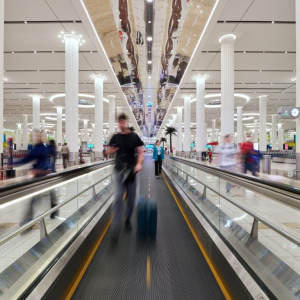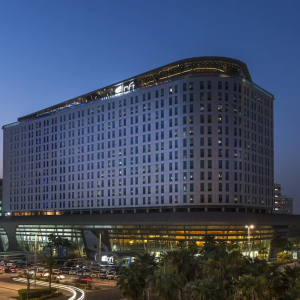Dubai’s bus priority system is changing the way buses move through the city, making public transport faster and more reliable. By giving buses priority at traffic signals, Dubai is tackling one of the biggest challenges in urban mobility: delays caused by traffic congestion. This innovative system, rolled out by the Roads and Transport Authority (RTA), allows buses to breeze through intersections, cutting travel times and improving the commuter experience. In a city known for its futuristic skyline and ambitious projects, this initiative is a game-changer for residents and visitors alike.
This article dives into how the bus priority system works, its benefits, and what it means for Dubai’s future as a smart city. With a focus on sustainability and efficiency, the system is setting a new standard for public transportation worldwide.
What Is the Bus Priority System?
The bus priority system is a smart traffic management solution that gives buses the right of way at signalized intersections. Using advanced technology, traffic signals detect approaching buses and adjust light timings to let them pass with minimal stops. This reduces waiting times at red lights, ensuring buses stick to their schedules even during peak hours.

The system relies on a combination of sensors, GPS, and real-time data to communicate between buses and traffic signals. When a bus approaches an intersection, the signal either extends the green light or shortens the red light, allowing the bus to move through smoothly. This technology is part of Dubai’s broader vision to integrate smart solutions into its infrastructure.
Key Features of the System
- Real-Time Detection: Sensors identify buses nearing intersections.
- Signal Adjustment: Traffic lights adapt to prioritize bus movement.
- GPS Integration: Tracks bus locations for precise timing.
- Scalability: Can be expanded to more routes and intersections.
Why Dubai Needed This System
Dubai is a bustling metropolis with millions of residents and tourists. Its roads are often packed, especially during rush hours, leading to delays for public transport users. Buses, which are a lifeline for many workers and residents, frequently got stuck in traffic, causing frustration and unreliable schedules.

The RTA identified that delays at traffic signals were a major bottleneck. Traditional traffic light systems treated buses the same as private vehicles, forcing them to wait even when carrying dozens of passengers. The bus priority system addresses this by prioritizing buses, which carry more people than individual cars, thus easing congestion and promoting public transport use.
The Scale of the Problem
- Over 1.5 million daily trips are made on Dubai’s public transport.
- Buses serve over 140 routes across the city.
- Traffic congestion costs the city millions in lost productivity annually.
How the System Reduces Delays

The bus priority system has slashed travel times by reducing the time buses spend at traffic lights. According to the RTA, trials showed that buses equipped with this technology experienced up to a 30% reduction in delays at key intersections. This means commuters reach their destinations faster, and bus schedules are more predictable.
For example, a bus route that once took 45 minutes during peak hours now takes as little as 30 minutes on some corridors. This improvement not only benefits passengers but also allows the RTA to operate more efficiently, potentially increasing the number of daily trips without adding more buses.
Real-World Impact
- Faster Commutes: Passengers save up to 15 minutes per trip.
- Reliable Schedules: Buses stick to timetables, even in heavy traffic.
- Increased Capacity: More trips possible with the same fleet.
Benefits for Commuters and the City
The bus priority system is more than just a tech upgrade—it’s a step toward a more sustainable and livable Dubai. By making buses faster and more reliable, the RTA is encouraging more people to choose public transport over private cars. This shift has several ripple effects that benefit both commuters and the city as a whole.
For Commuters
- Time Savings: Shorter trips mean more time for work or leisure.
- Affordability: Public transport remains cheaper than owning a car.
- Comfort: Reliable schedules reduce stress and uncertainty.
For the City
- Less Congestion: Fewer cars on the road ease traffic flow.
- Lower Emissions: Public transport reduces the city’s carbon footprint.
- Economic Gains: Efficient transport boosts productivity and tourism.
Technology Behind the System
The bus priority system is powered by cutting-edge technology that integrates seamlessly with Dubai’s existing infrastructure. Buses are equipped with transponders that communicate with traffic signal controllers. These controllers use real-time data to make split-second decisions about light timings. The system is also connected to Dubai’s Smart Traffic Management Center, which monitors traffic flow across the city.
This technology isn’t just about buses—it’s part of Dubai’s broader push to become a global leader in smart cities. The RTA has plans to integrate the system with other forms of transport, like trams and metro lines, to create a fully connected mobility network.
Tech Highlights
- Transponders: Devices on buses signal their approach to intersections.
- Smart Controllers: Traffic lights adjust based on real-time data.
- Centralized Monitoring: The RTA oversees the system citywide.
Challenges and Solutions
Implementing the bus priority system wasn’t without hurdles. One challenge was ensuring the system didn’t disrupt traffic for other vehicles. The RTA addressed this by carefully calibrating signal timings to balance bus priority with overall traffic flow. During trials, they fine-tuned the system to avoid creating new bottlenecks.
Another challenge was scaling the technology across Dubai’s vast road network. The RTA started with high-traffic corridors and plans to expand to more intersections over time. Public awareness campaigns also helped educate drivers about the system, reducing resistance to the changes.
Overcoming Obstacles
- Balancing Traffic: Adjusted signals to minimize car delays.
- Phased Rollout: Started with key routes before citywide expansion.
- Public Engagement: Campaigns explained benefits to drivers.
What’s Next for Dubai’s Transport?
The success of the bus priority system is just the beginning. The RTA is exploring ways to enhance the system, such as integrating it with autonomous buses and expanding it to cover more routes. There’s also potential to use artificial intelligence to predict traffic patterns and optimize signal timings even further.
Dubai’s ambition is to have 25% of all trips made by autonomous transport by 2030. The bus priority system is a key step toward that goal, proving that smart technology can transform urban mobility. Other cities are already looking to Dubai as a model for their own public transport upgrades.
Future Plans
- Autonomous Buses: Integrating priority systems with driverless vehicles.
- AI Optimization: Using AI to predict and manage traffic flow.
- Global Influence: Sharing Dubai’s model with other cities.
Why This Matters for Residents

For Dubai’s residents, the bus priority system means more than just faster bus rides. It’s about improving quality of life. Commuters can spend less time stuck in traffic and more time with family or at work. Students can get to school on time, and workers can rely on buses to get them to their jobs without stress.
The system also supports Dubai’s vision of sustainability. By encouraging public transport use, the city is reducing its reliance on fossil fuels and cutting down on air pollution. This aligns with the UAE’s broader goals of achieving net-zero emissions by 2050.
Everyday Benefits
- More Free Time: Less time commuting means more time for life.
- Cleaner Air: Fewer cars contribute to better air quality.
- Inclusivity: Affordable transport options for all residents.
A Model for the World
Dubai’s bus priority system is setting a global benchmark for smart urban transport. Cities like London, Singapore, and New York have used similar systems, but Dubai’s scale and ambition make it stand out. The RTA’s commitment to innovation is showing the world how technology
Read More: UAE’s Heartwarming Hajj Pilgrimage: 87-Year-Old Grandmother Joins 6,000 Pilgrims














